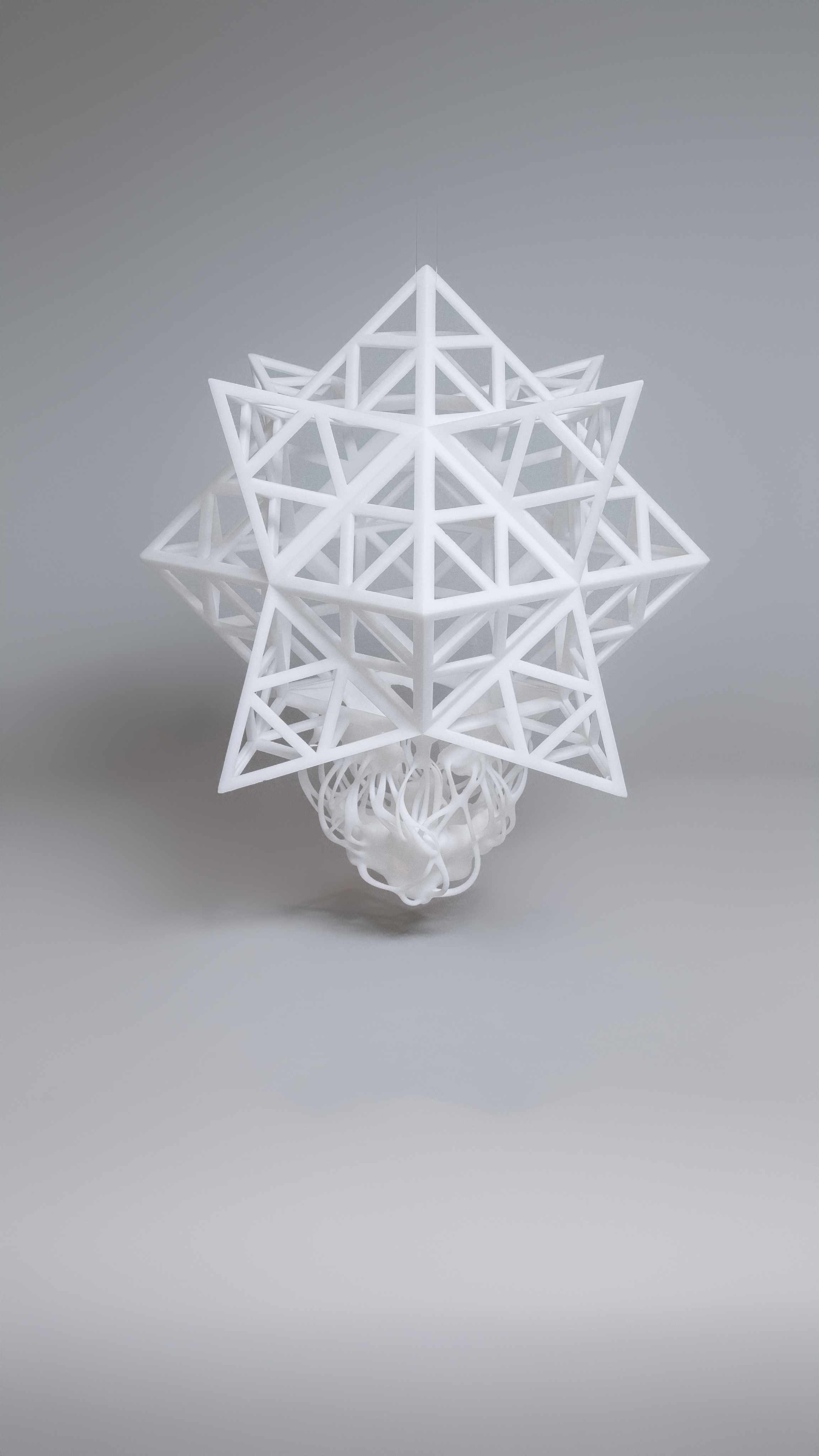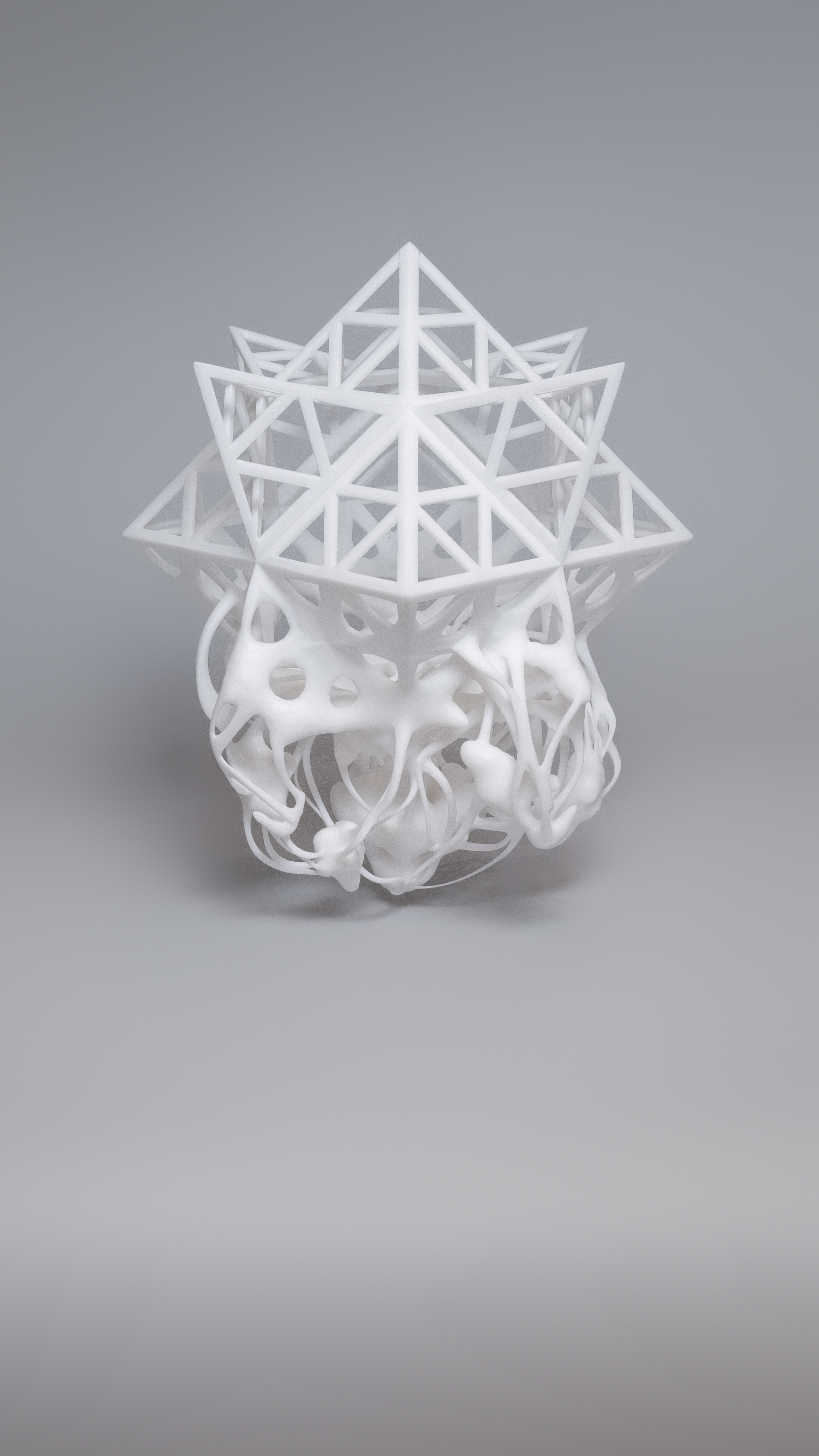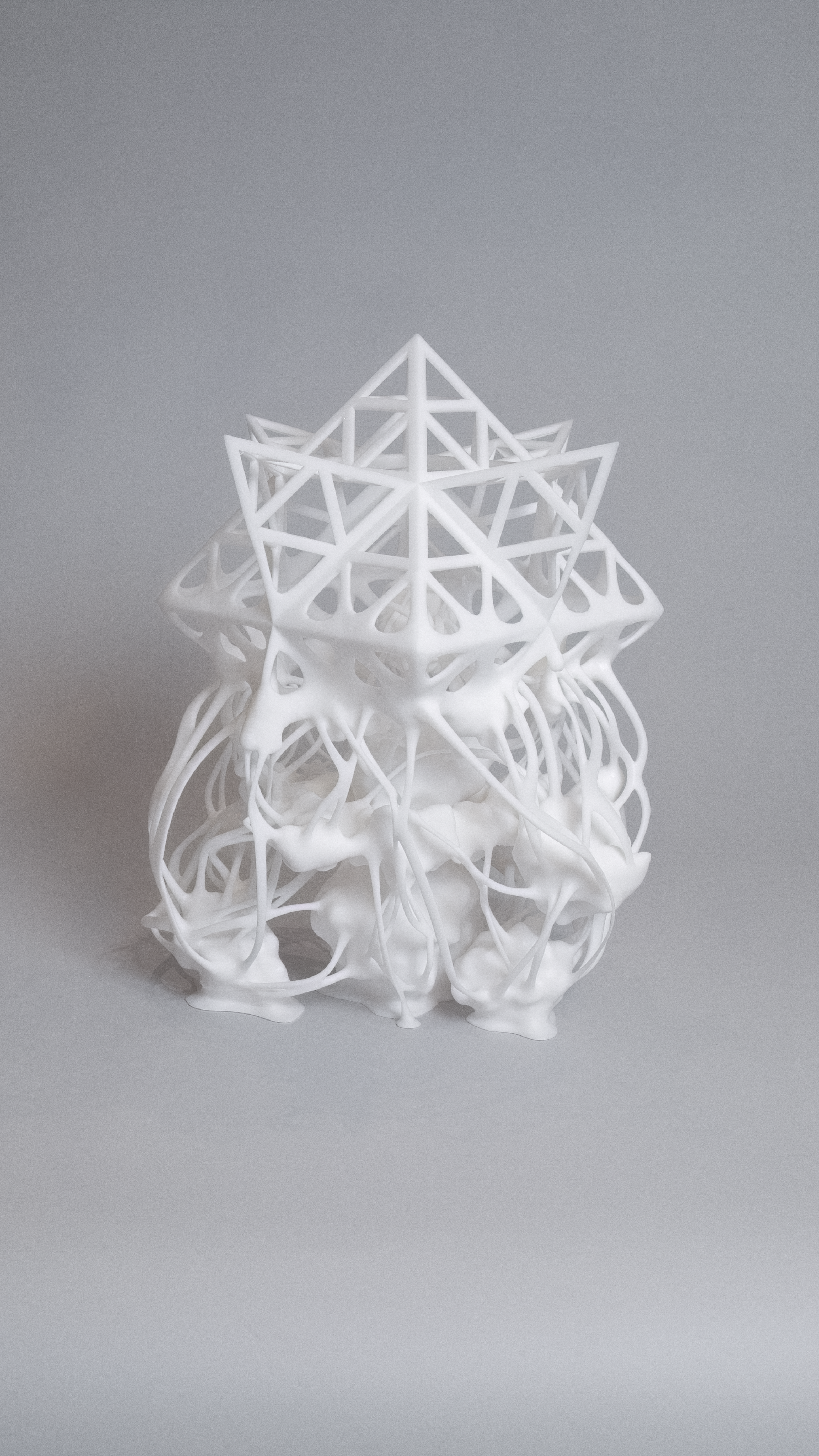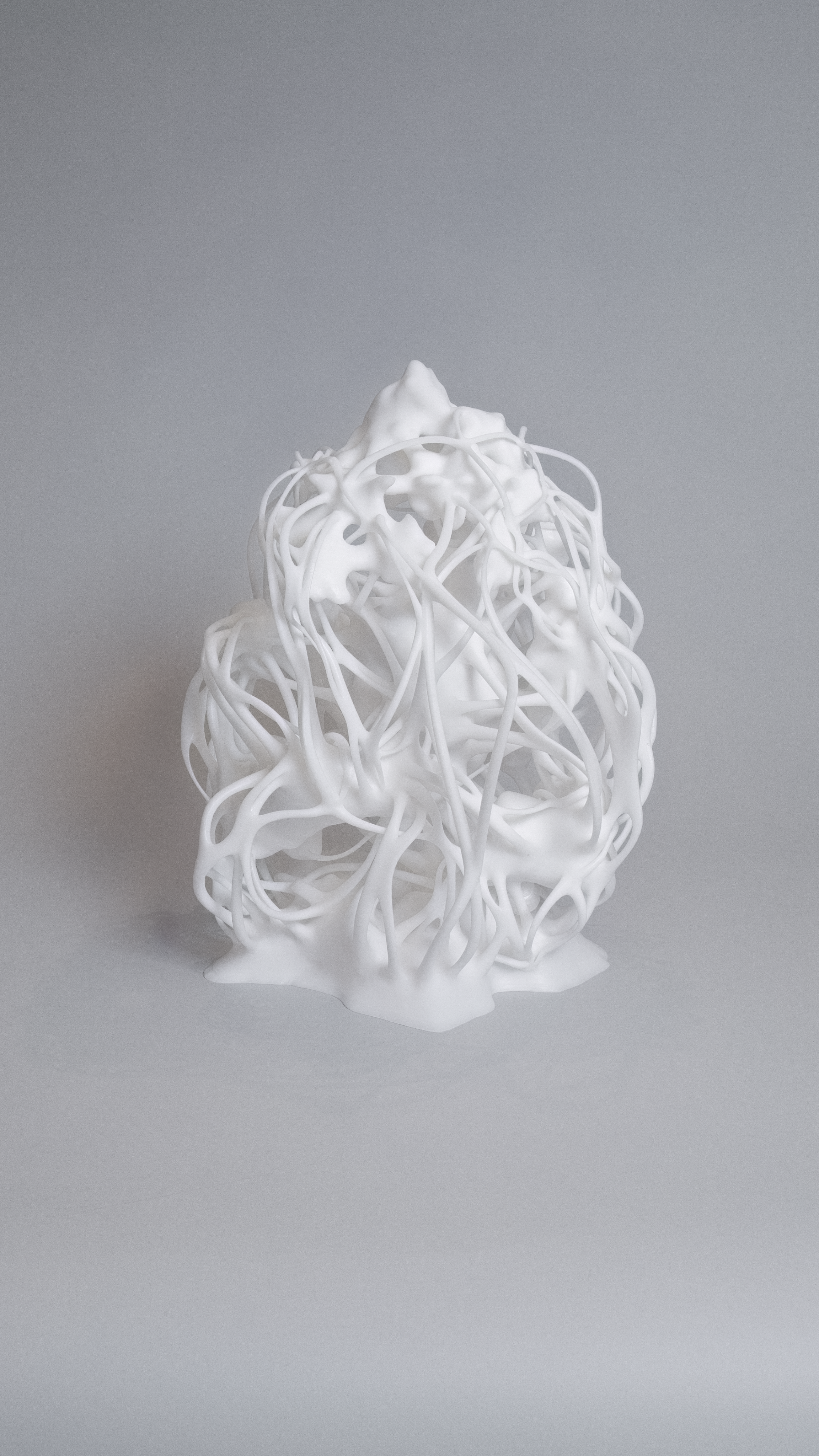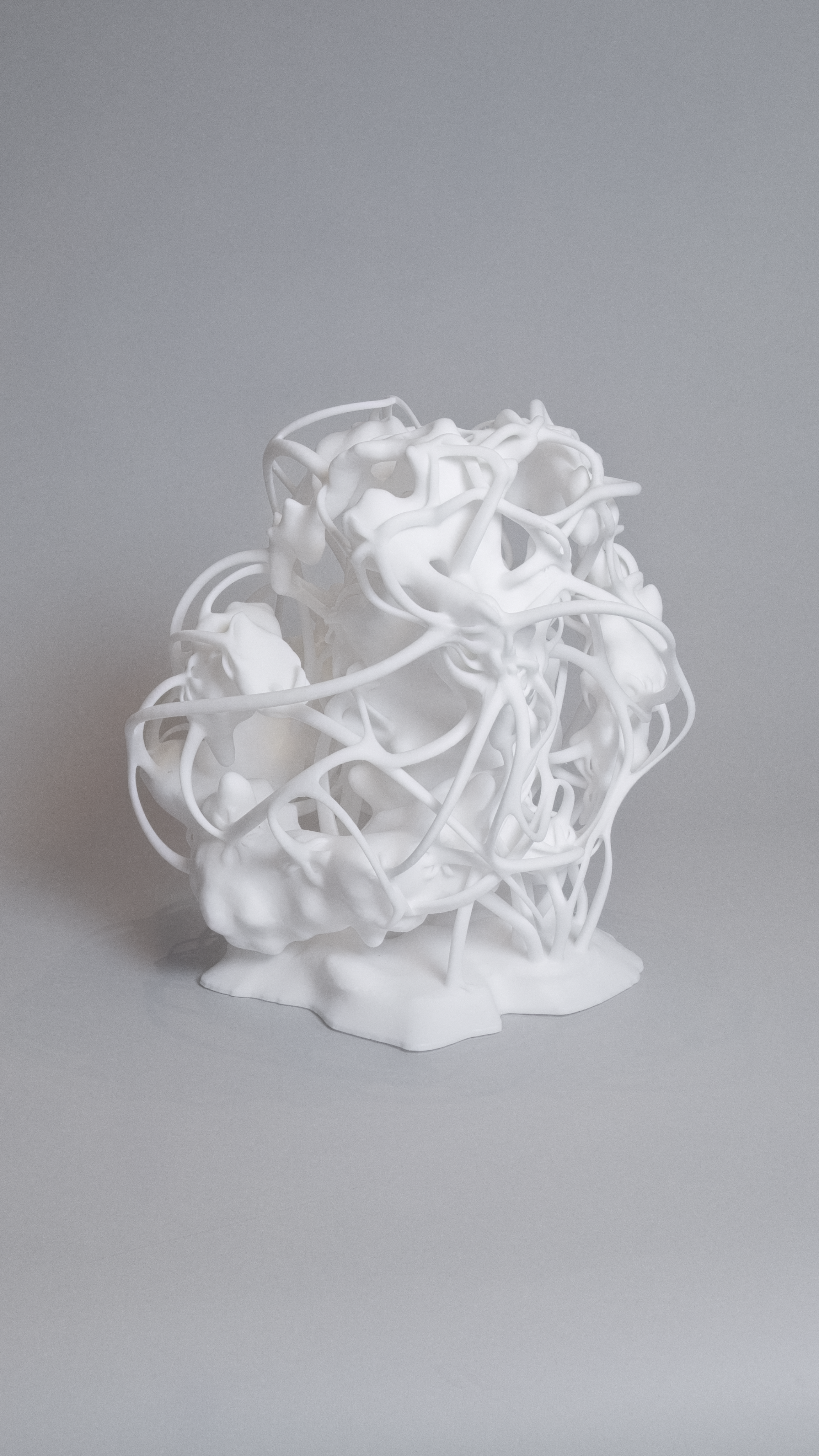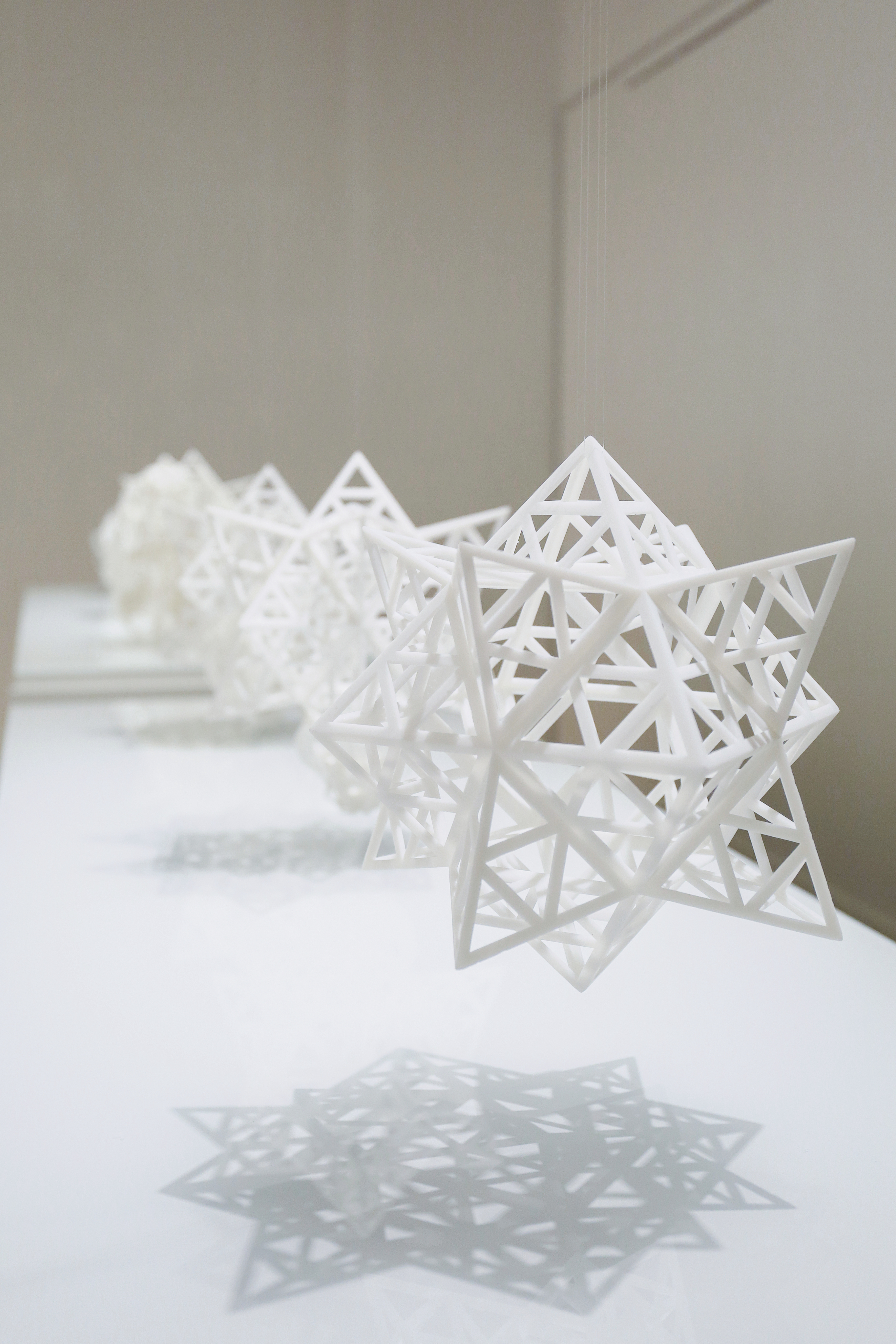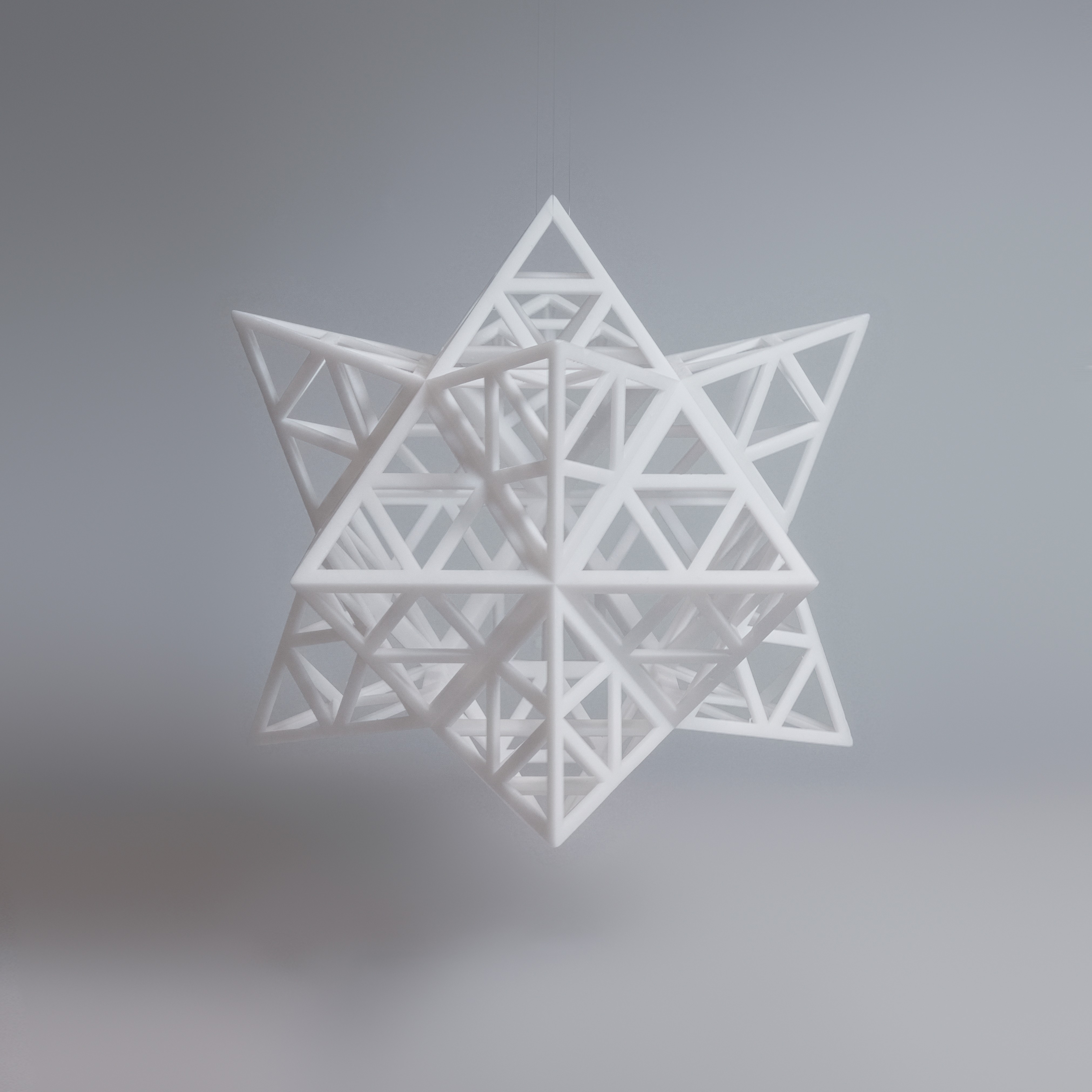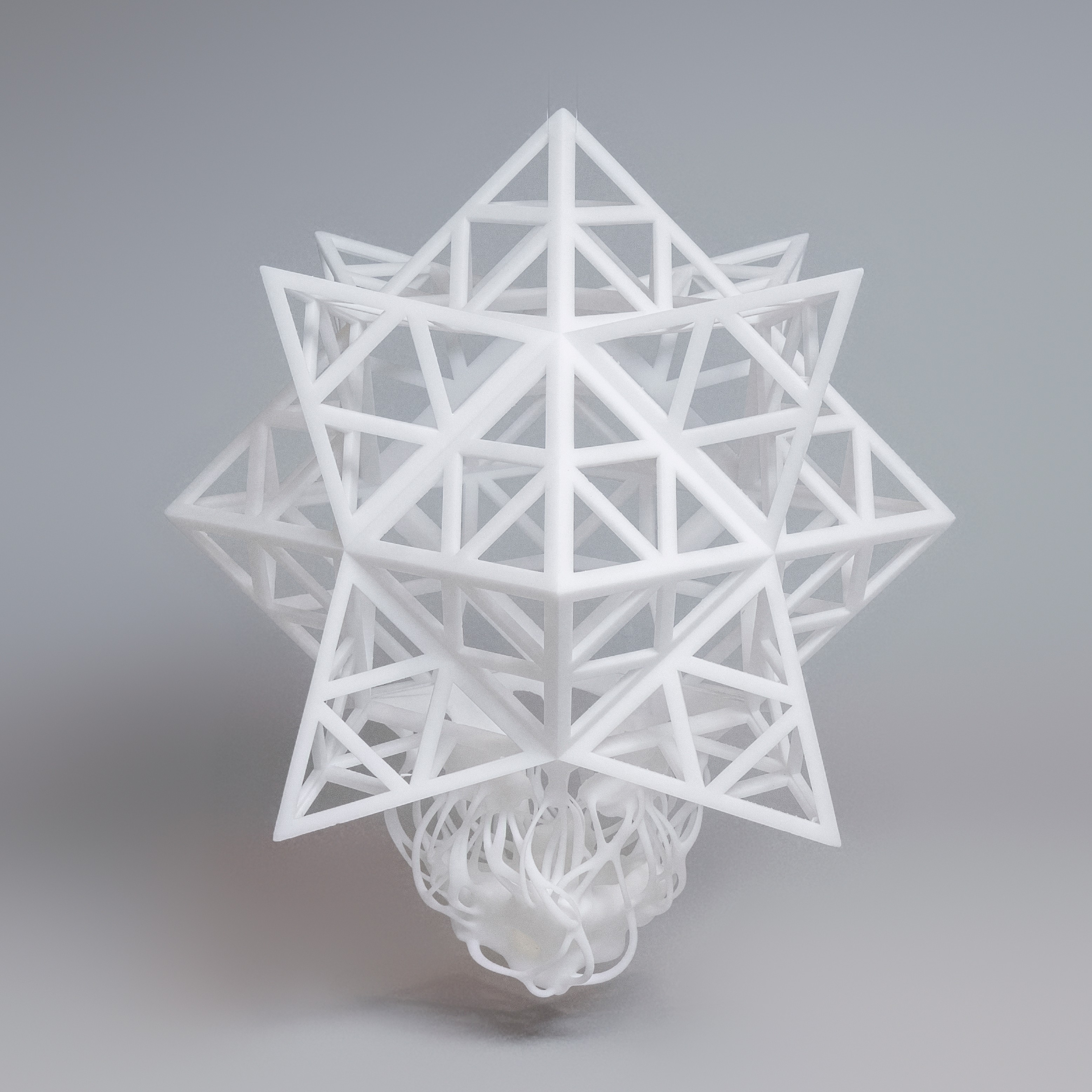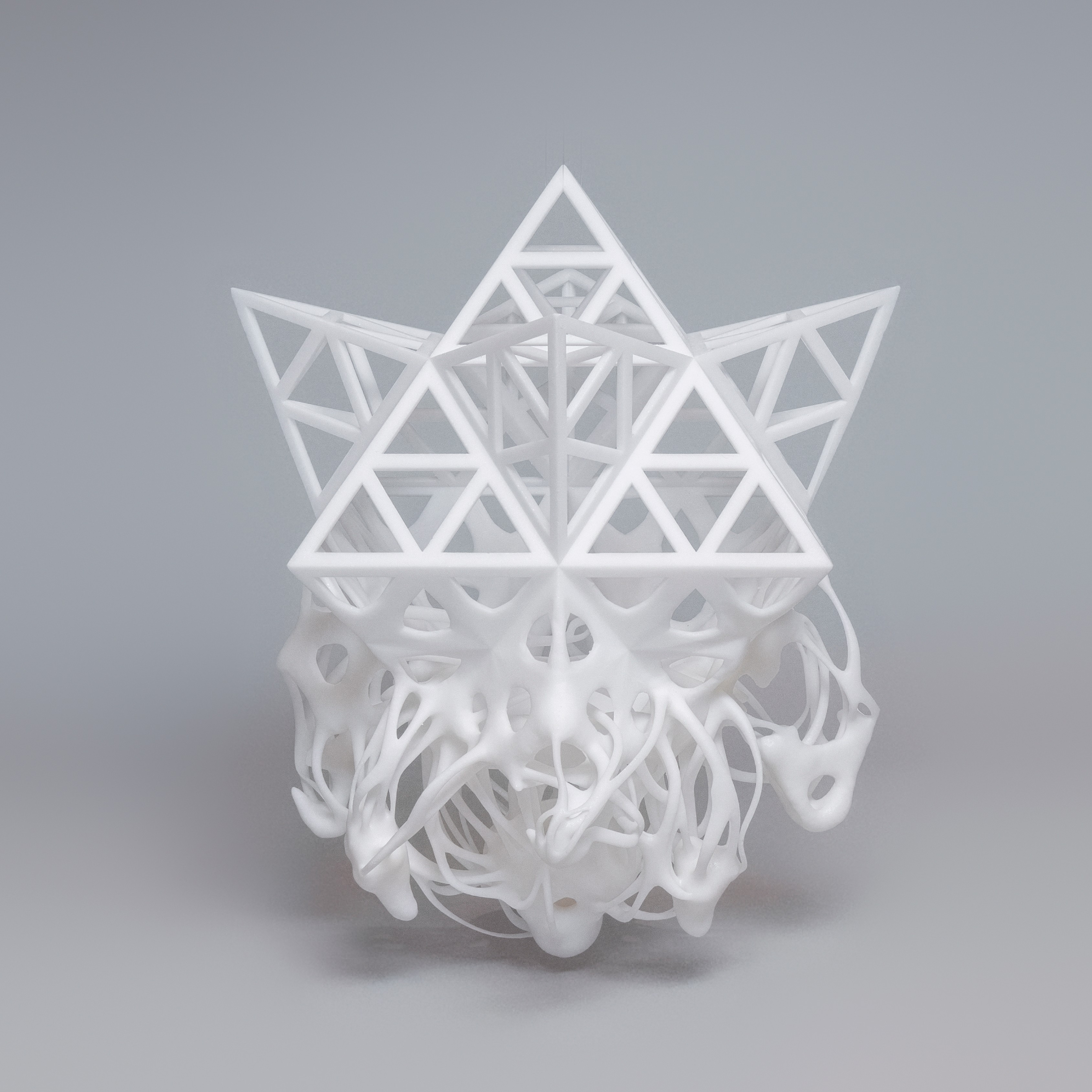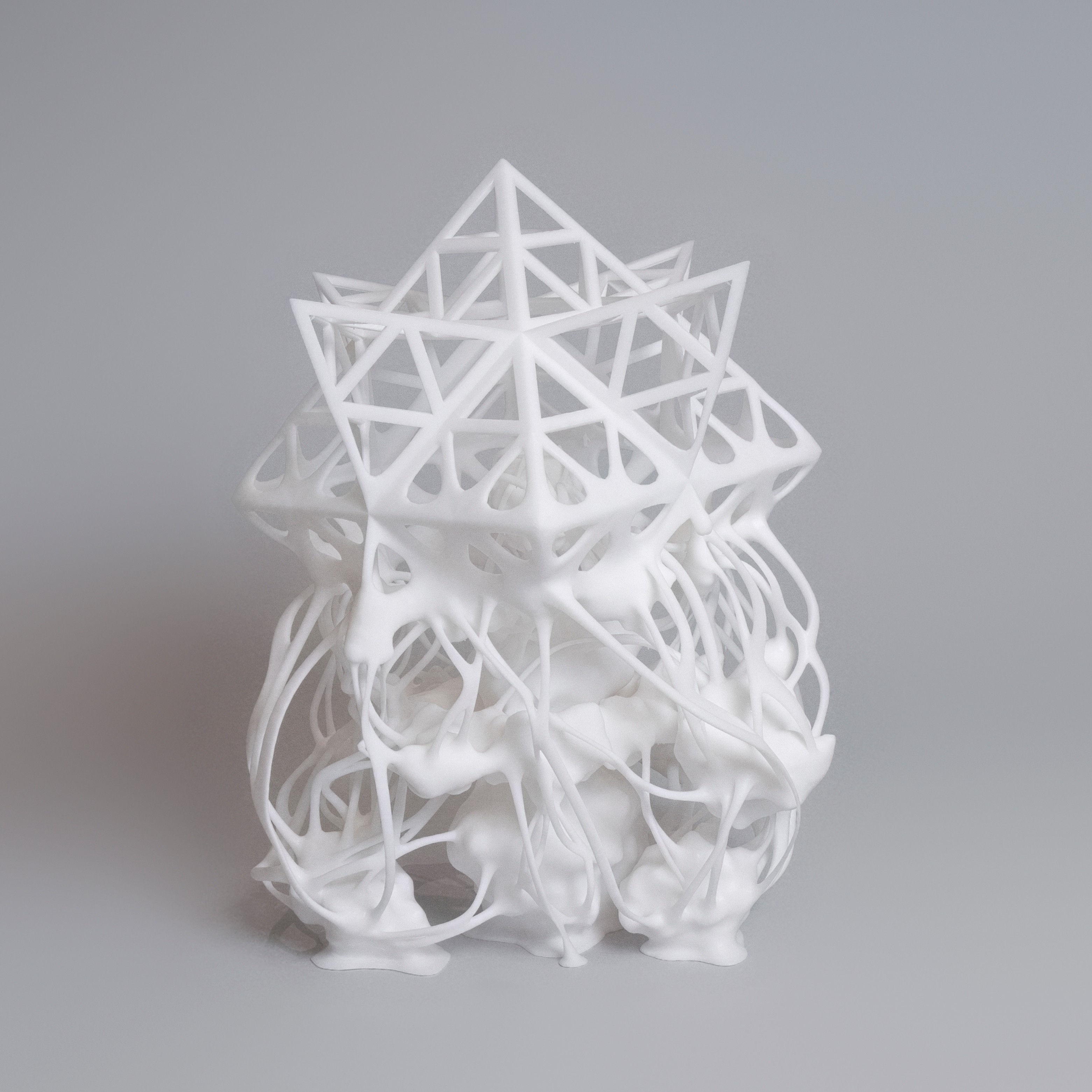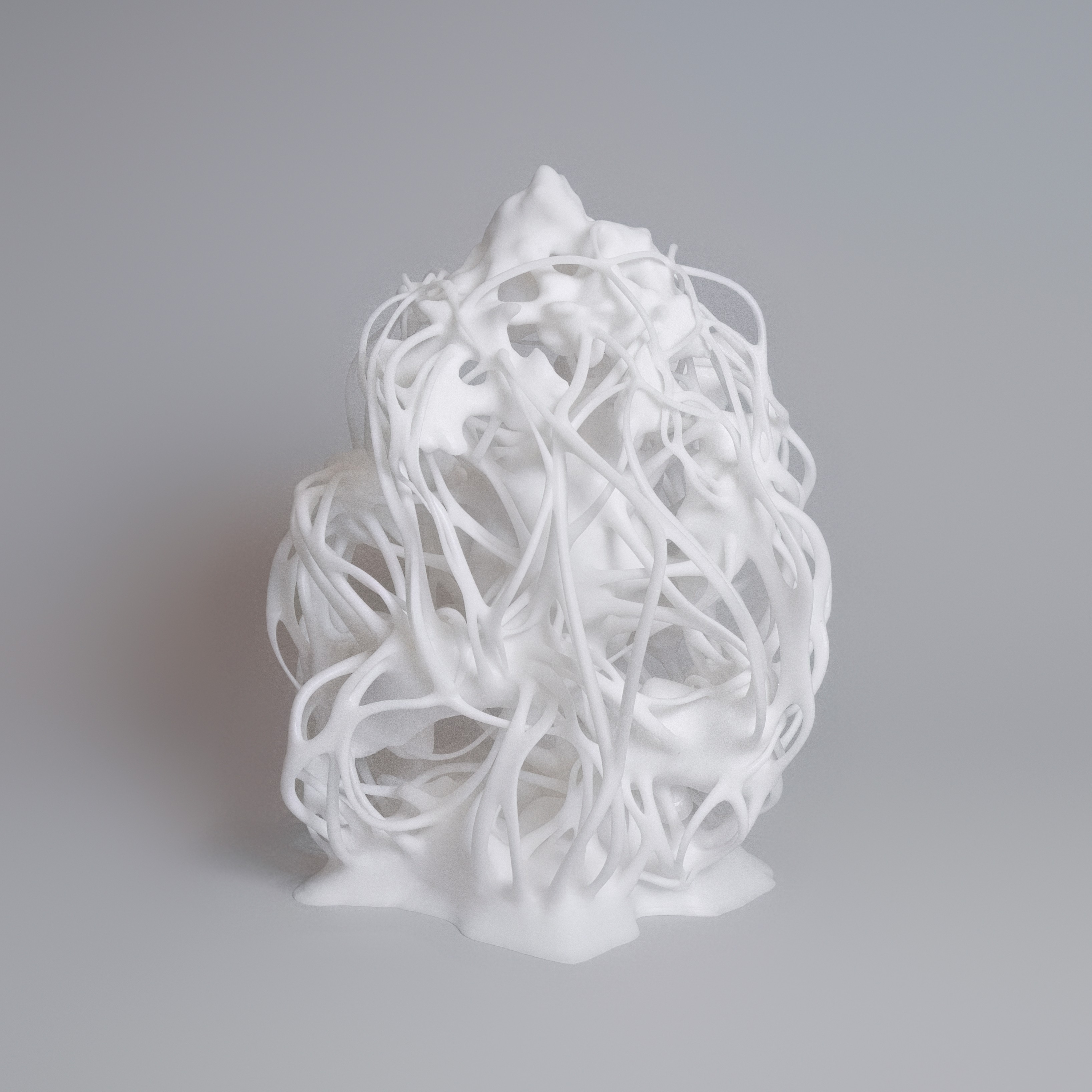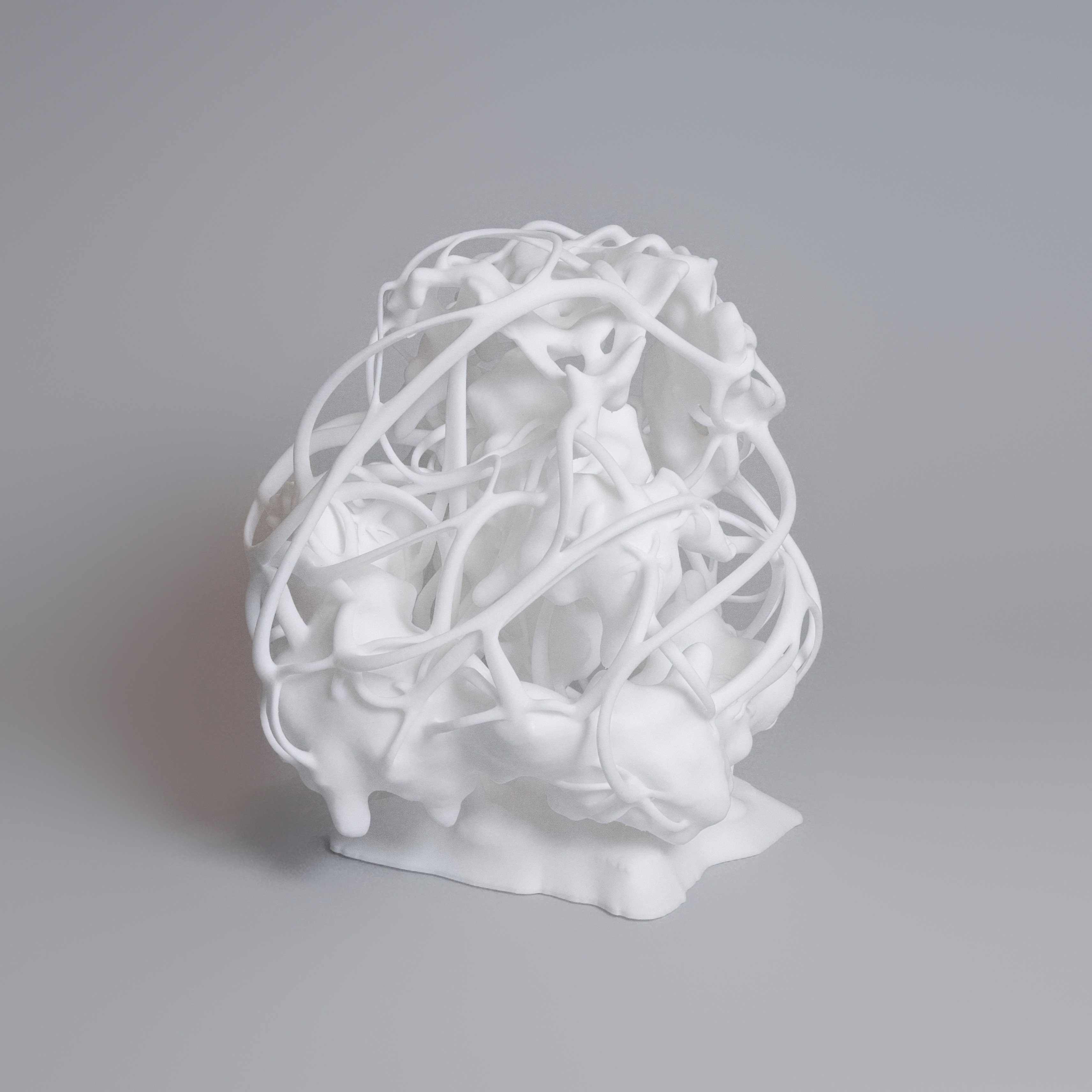Menu
Work
About
Contact
Franciscan friar, Luca Pacioli (ca. 1445-1509) is best known for his obsession with the mathematical rhythms and geometrical interdependencies behind platonic solids and their extension into polyhedral forms. He collaborated with Leonardo da Vinci in his work De Divina Proportione (1509), for which da Vinci drew sixty image plates describing the "golden proportions" within the solids and polyhedra.
In this project, I have set out to disrupt, extend, evolve, juxtapose, and melt the stringent proportions of Pacioli's Duodecedron Abscisus Elevatus Solidus, consisting of 120 equilateral triangles. I construct an argument through five iterative works. Each individually showing a frozen state of a transformation of Renaissance obsession of the golden proportions into contemporary post-digital irrational geometry. Together the five works build up a gradient transition to set out a new formal grammar.
In the production of this work, I combined topological modelling operations with intuitive surface deformations, melting the strictly logical into the apparently random, resulting in sculptures that seem to recall natural formations, and their translations as frivolities and voluptuous, ornamented exuberance.
These works derive from a metamorphosis of the digital rationality of subdivided mathematical surfaces into intuitive and chaotic extrusions and tendrils, clashing formal languages that nonetheless strive for an internally consistent logic and process. Where da Vinci focused on descriptive features, such as shape, size and perspective, Pacioli was concerned with the theoretical foundations of these forms. I use contemporary digital tools, with their embedded rational lines of code, to collide the perceived, purely aesthetically, controlled form with the molten, apparently irrational, heaviness of unstructured form.
#Installation
#3D printing
2019
